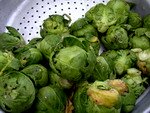If you’re looking for a great culinary arts institute, the New England Culinary Institute is one of the best options out there. They’ve got a great reputation, so that when you earn your degree, you’ll have an easier time getting work. They’ve also got a great internship program, giving you some valuable work experience before you even graduate.
But what exactly does the New England Culinary Institute have to offer? And, most importantly when you’re picking a culinary arts institute, what sets it apart from the rest?
In this article, I’ll tell you all about this culinary arts institute. First, I’ll briefly go over the school’s history and philosophy. Then, I’ll talk about the things that make it stand out from other culinary arts schools. Next, I’ll go over the different available programs. And finally, I’ll talk about tuition and fees.
If your dream is to become a professional chef, you should know as much as you can about the different culinary arts schools. So read on!
A Bit About the New England Culinary Institute
The New England Culinary Institute (NECI), located in Montpelier, Vermont, was established in 1980. It started out small, with its first graduating class consisting of just 7 students! But it’s grown a lot since then. Today, you’ll find about 500 student on campus – a good deal more than 7, but still small enough to have a feeling of community.
One of the most important things about NECI is their guiding principle, “Learn by living it.” A lot of their curriculum is based on giving you on-hands, real-life experience. There are a lot of hands-on classes, and lots of internship opportunities. You learn by doing, you have a great student-to-teacher ratio, and you learn what it means to work in the culinary industry in the real world, so that when you graduate, you’re ready for it.
And although there’s no official ranking for culinary arts schools, NECI has a great reputation. Graduates are happy with what they learn and what they accomplish afterward, and the name NECI on your resume gives a certain prestige.
Special Features
All the top culinary arts institutes have certain features that make them special, different from the others. And depending on what type of personality you have, some schools will be better for you than others. It’s important to know which school offers what so that you can pick the best one for you.
So what sets the New England Culinary Institute apart?
- The small campus and student body gives the school a feeling of community and closeness that you just can’t get with thousands of students.
- They have a great student-to-teacher ratio. 10:1, that’s amazing. More teachers per students means that the teachers can focus more attention on you and really get to know you. They have more time to help you learn and understand the things that are giving you trouble.
- You get to work in real restaurants as part of your schooling. NECI owns several for-profit restaurants, including NECI on Main, La Brioche, The Chef’s Table, and a few others. And they’re the real deal. Working there gives you experience you just can’t get in a classroom.
- You get to learn about more than just cooking – you also get to learn about the whole process of getting ingredients from the farm to the kitchen. There are plenty of farms, farmer’s markets and local producers to help you understand how to get the best, freshest ingredients available.
- For some fields, internships are incredibly valuable. The culinary arts is one of those fields. It’s one thing to learn how to cook in a classroom, but it’s a whole other to actually do it in a restaurant with all the pressure that goes along with it. An internship can help you get prepared for that. NECI ‘s programs include two 700 hour internships, with many, many different restaurants to choose from all over the world.
- A culinary career doesn’t just mean cooking. You may also need to know about management, catering, purchasing, working the front of the restaurant as well as the back. The New England Culinary Institute offers courses for all of those subjects, to give you a well-rounded education.
All of this put together means you get a top notch culinary arts institute. It’s also pretty high pressure – the internships and hands-on training can get pretty intense. It’s kind of like learning to swim by being thrown into the water. Yes, the teachers are there to help and guide you, but you’ll be working hard right off the bat – they don’t ease you into it!
Programs Offered
Another thing to consider when you’re looking at different culinary institutes is whether they have a program that’s right for you. Most culinary arts schools have a general sort of program, but some also offer various specializations that may be even better suited to you!
The New England Culinary Institute offers the following programs:
- Bachelors Degree in Culinary Arts
- Associate of Occupational Studies in Culinary Arts degree
- Associate of Occupational Studies in Baking and Pastry Arts degree
- Bachelors Degree in Hospitality and Restaurant Management
- Associate of Occupational Studies in Hospitality and Restaurant Management degree
- Online Bachelors Degree in Hospitality and Restaurant Management
- Certificate in Professional Cooking
- Certificate in Professional Baking
- Certificate in Professional Pastry
There’s 3 basic types of programs: the Bachelors degree, the Associate degree, and the Certificate.
- The Bachelors degrees are the most in-depth. They take more time but leave you prepared for some higher positions in the industry.
- Associate degrees are a little less in-depth, but also have internships and hands-on training. They give you lots of career choices, although some of the higher position might be a little more difficult.
- The Certificates, on the other hand, are short, intensive programs. Their goal is to help you improve your current culinary career and better your existing skills, or to allow you to test if a culinary career is right for you, before you go for a 4 year degree.
The program that’s right for you depends on what exactly your career goals are, and how much time you have available for your culinary arts degree. NECI offers a general culinary arts degree, but you can also specialize in delicious desserts: baking and pastry!
Tuition and Fees
The tuition for the New England Culinary Institute is probably on the higher end of the spectrum, at over $30,000 per year for certain Bachelors and Associate degree. The Certificates are less expensive, closer to $10,000 for the Certificate.
It’s really not orders of magnitudes higher than other top schools. It is a little more expensive, but you do have the possibility of paid internships to offset some of the costs. And you get extremely valuable hands-on experience, contacts in the culinary industry, and a degree that’ll open lots of doors for you. If you can afford it, it’s well worth the cost if your dream is to be a chef!
So that’s a little bit about the New England Culinary Institute. It has a lot to offer, and has lots of very happy graduates, including the Food Network’s Alton Brown. It’s well worth taking the time to figure out if it’s the right culinary arts institute for you.


 Higher end chocolate generally has a better taste, and also melts a lot smoother than lower end chocolate.
Higher end chocolate generally has a better taste, and also melts a lot smoother than lower end chocolate.










